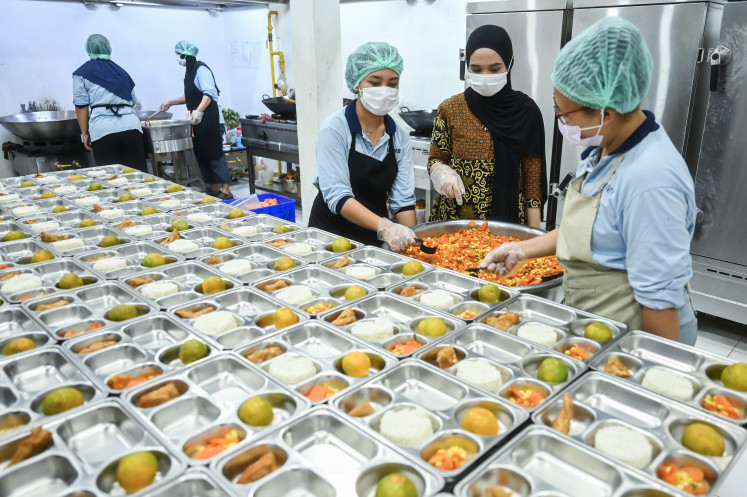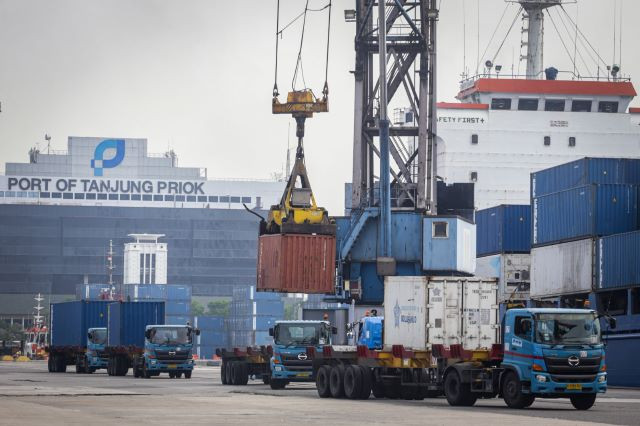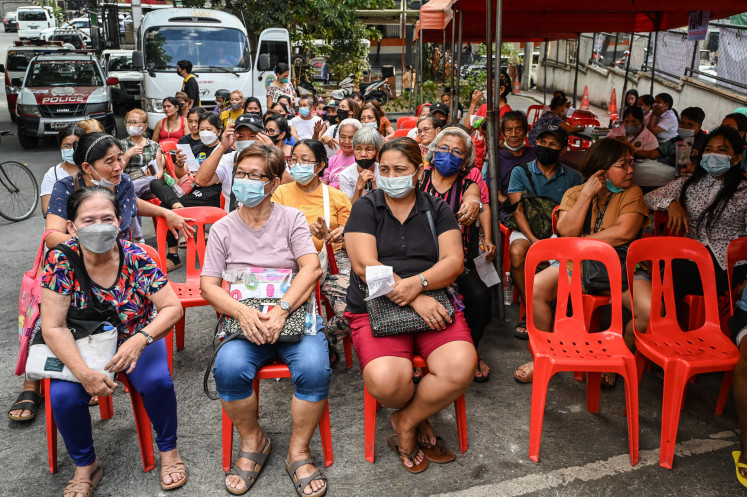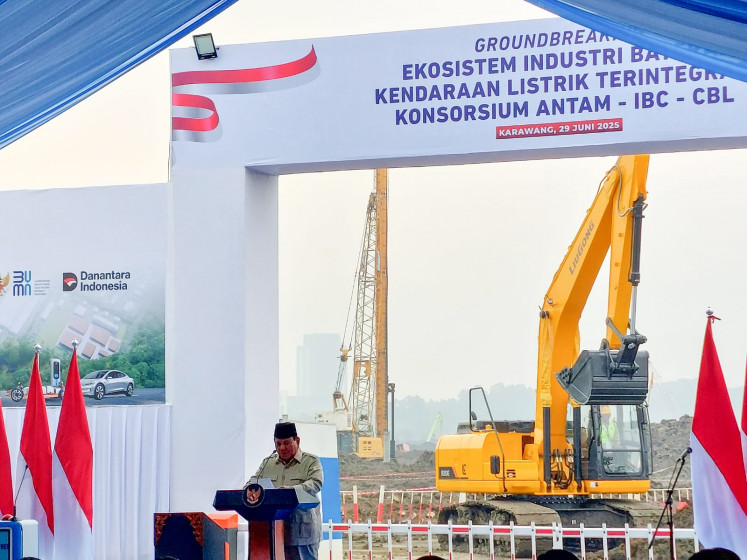Popular Reads
Top Results
Can't find what you're looking for?
View all search resultsPopular Reads
Top Results
Can't find what you're looking for?
View all search resultsRevisiting Indonesia’s bioethanol transport fuel policy
The bottleneck hindering the bioethanol mandate may be attributed to three factors: high cost of sugarcane (molasse), fluctuations in the price of molasse, and low production capacity.
Change text size
Gift Premium Articles
to Anyone
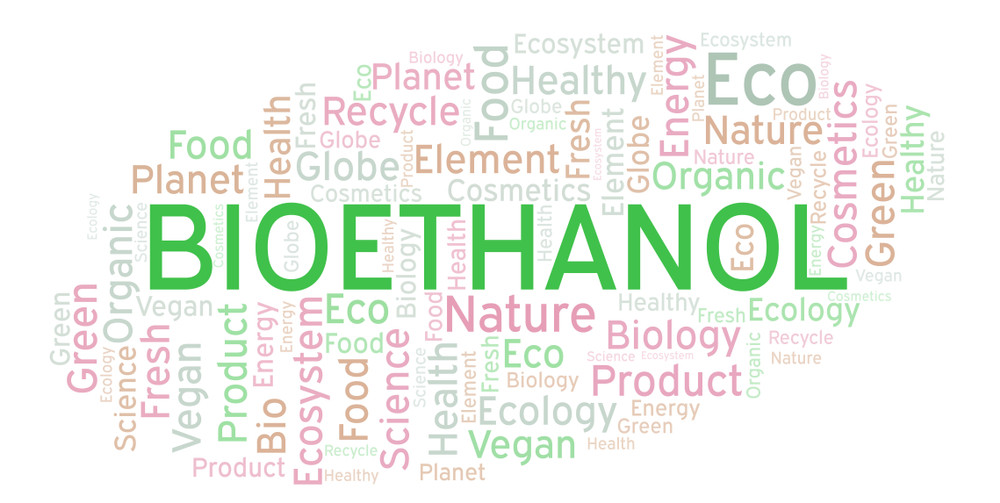 Bioethanol. (Shutterstock/Sharaf Maksumov)
Bioethanol. (Shutterstock/Sharaf Maksumov)
B
y 2025, Indonesia aims to increase its renewable energy share to 23 percent for transportation in line with the country’s commitment to reduce its greenhouse gas emissions made during the COP 21 conference on climate change in Paris in 2015. Policies to shift from the use of diesel and gasoline fuels to biodiesel and bioethanol are among the strategies to meet that climate change target. On top of that, the country needs to reduce its dependency on imported refined products, especially imported gasoline, which currently serves more than 50 percent of national consumption.
In contrast to the biodiesel blend mandate — a 30 percent mandatory blend in diesel fuel that has been in place since December of last year — the planned bioethanol mandate program has yet to be implemented. The Ministry of Energy and Mineral Resources (MEMR) has mandated that gasoline fuel be blended with bioethanol, setting targets of 5 percent by 2020 and 20 percent by 2025. Nevertheless, the blend percentage of bioethanol in gasoline fuel remains zero.
In fact, bioethanol blend requirements was first mandated in 2008. According to the Association of Denatured Alcohol and Ethanol (ASENDO), between 2012 and 2017 only around 500 kiloliters of bioethanol was blended with gasoline fuels and since 2018 there has been practically no bioethanol used as transport fuel. In contrast to bioethanol, according to MEMR data and the United States Department of Agriculture’s Foreign Agricultural Service report, the blend rate of biodiesel in diesel transport fuel in Indonesia grew from less than 1 percent in 2010 to nearly 20 percent in 2019 which is in line with the targets set by the biodiesel mandate.
During the same period, the road transport sector in Indonesia consumed more gasoline than diesel fuel with a ratio of around 55:45. With an estimated 13.6 million gasoline-fueled cars and 12 million motorcycles compared to about 4.7 million diesel fueled vehicles in operation and assuming that electric vehicle penetration will be limited, we
expect that gasoline fuel consumption will still be more important than diesel for the next 20 years.
The bottleneck hindering the bioethanol mandate may be attributed to three factors: high cost of sugarcane (molasse), fluctuations in the price of molasse, and low production capacity.
First, the high production cost of sugarcane, which is the main feedstock of bioethanol, results in a big gap between bioethanol and gasoline prices. For example, the market ceiling price of bioethanol fuel in August 2020 was Rp 14,779 (US$1.1) per liter, while gasoline ranges from Rp 7,650 to Rp 9,200 per liter in most provinces.
Second is the fluctuation of molasse prices. A recent example: MEMR’s historical data shows that the average price of molasse jumped by more than 45 percent between June and August 2020, causing the bioethanol market ceiling price to increase by nearly 30 percent during the same period — the highest price since the 2016 decree issuance. The stagnating or even reduced production of sugarcane since 2015 combined with the increasing demand for sugar and molasse may be the main factor behind the price jump. In addition, molasse exports increased by 20 percent between 2017 and 2018 and by 26 percent between 2018 and 2019.
Another factor that might contribute to the price fluctuation is the sugarcane purchasing system called the ‘ cut-purchase
system’. In this system, factories buy sugarcane from farmers at a fixed reference price that varies only in relation to the measured sugarcane yield but which is not connected to sugar prices in the market. As the sugar price fluctuates in the market, sugar factory stakeholders might see this reference price as a risk, resulting in additional costs to cover.
In addition, sugarcane yield measurement can be problematic. Farmers may tend to trade with the factories that assign higher yield to their products. As a result, the new purchasing system tends to eliminate small and private factories from the market, thus reducing competition while at the same time increasing the price. The molasse and sugar yield become less certain.
Third is the low capacity of fuel grade bioethanol production. There are currently only three factories that can produce molasse-based fuel-grade bioethanol in Indonesia with a total yearly production capacity of 45,000 kiloliters of bioethanol, which means that if Indonesia had implemented the 5 percent bioethanol mandate, only about 2.6 percent of the demand could have been met.
To address these issues, the Government of Indonesia needs to take the following three measures. First and most importantly, it must improve the current “cut-purchase system”. A periodic price adjustment mechanism should be put in place to link the fixed benchmark purchase price of sugarcane to the fluctuating sugar price. With the adjustment mechanism, risk of loss for sugar factories would be reduced as prices would be regularly adjusted while farmers would receive guaranteed prices.
A more standardized and transparent method of sugarcane yield measurement is also essential. It would encourage farmers to trade with the nearest factory, thus reducing the risk of yield drop and should guarantee fair measurement, especially during the harvesting period. Furthermore, small, and private factories would be able to remain in the market, thereby restoring competition.
Second, the government needs to secure molasse supply for domestic use. A practical measure would be to imitate the export fee implemented on crude palm oil exports, whose revenue is used to close the gap between biodiesel and pure diesel prices and to support palm plantations. In the case of bioethanol, the revenue should be used principally to support sugarcane farmers, thereby decreasing production costs and, to a limited extent, narrowing the price gap between bioethanol and gasoline prices.
Levying an export fee of $25 per ton on exported molasse, for example, would provide a fund of roughly $190 million from which $155 million could be allocated to support sugarcane plantations while the rest ($35 million) should provide at least enough funds for the government to buy bioethanol from producers at the ceiling price and sell it to gasoline retailers at the gas station gasoline prices in any E2 program at the provincial level.
Third, the government must start immediately with a bioethanol mandate program, taking advantage of the current low gasoline consumption caused by the COVID-19 pandemic-related mobility restrictions and economic downturn. Mandates can start at the national level, for example, at a very low 0.2 percent blend rate or at the provincial level such as a 2 percent blend rate in East Java. Mandating low blend rates should pave the way for a bioethanol supply chain and pricing mechanism from plantations to gas stations.
---
Alloysius Joko Purwanto is energy and transport economist at the Economic Research Institute for ASEAN and East Asia and Bustanul Arifin is professor of agricultural economics at the University of Lampung (UNILA) and senior economist at the Institute for Development of Economics and Finance (Indef). The views expressed are their own.




